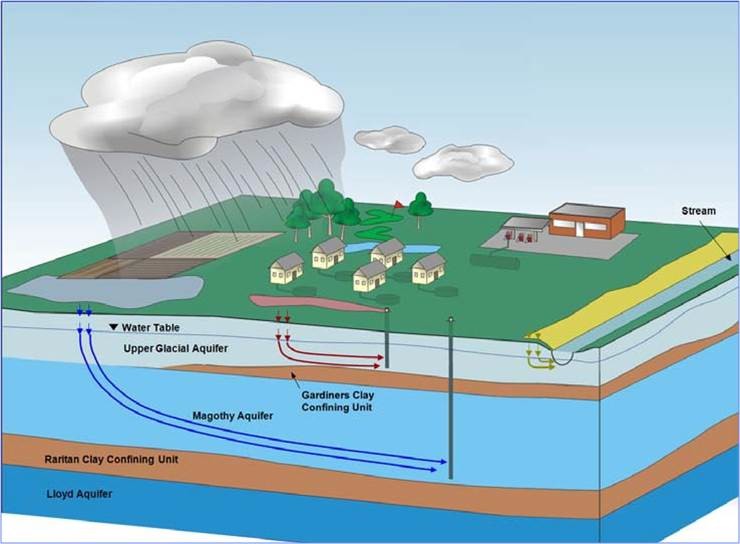Plan to re-authorize Queens wells draws skepticism
A plan to re-authorize wells in southeast Queens could have a negative effect on Long Island’s drinking water, environmentalists say.
The New York City Department of Environmental Protection is currently petitioning the New York State Department of Environmental Conservation to renew the water withdrawal permits for 68 wells in Queens, which expire at the end of this year. The DEP has owned the wells since 1996.
“Although we are not proposing any changes to the operation of the water system, we are seeking to renew our existing permit,” said Tara Deighan, a DEP spokesperson, in a statement. “We have no plans to use the wells.”
Re-permitting the wells, however, would enable New York City residents to have a back-up supply of water in the case of a drought, according to Adrienne Esposito, the executive director of Citizens Campaign for the Environment. She said it has become necessary for New York City to re-open the wells because the city is planning to shut down an aqueduct that transports water from upstate New York into the city.
Esposito does not think the benefits of the wells outweigh the risks to Long Island’s drinking water, however.
Esposito is fearful that re-opening the Queens wells, which have not been used since 2007, would reduce Long Island’s drinking water supply. Long Island is designated as a sole source aquifer, which means that all of its drinking water comes from aquifers underground. If the New York City Department of Environmental Protection is successful in its bid to re-open the wells in Queens, the DEP has the potential to take 62 million gallons of water per day from the aquifers, according to the draft environmental impact statement.
“This is a bad plan for Nassau County, period,” said Esposito at a public hearing on the proposal to renew the permits on June 21. “We reject the whole premise of this plan, we reject this whole plan and we’re going to call on the DEC to reject the whole thing.”
“We can’t give them our water, we don’t have it to give,” said Esposito, who also said at the hearings that the plan would only exacerbate a drought on Long Island. “We have to preserve what we have because there’s nowhere else to go.”
Other environmentalists worry about possible contamination from the wells. As the 68 wells drain an increasing amount of water from the aquifers, the water table would sink, and more salt water from the Long Island Sound and the Atlantic Ocean could infiltrate the aquifers. According to Sarah Meyland, the director of the Center for Water Resources Management at the New York Institute of Technology, the Lloyd aquifer, the deepest of Long Island’s aquifers, is on the cusp of having saltwater intrusion and may be pushed over the limit by New York City’s drainage of the aquifer.
“It would be catastrophic for the City of Long Beach because all their water comes from the Lloyd aquifer,” Meyland said.
Depleting the water could also change the flow of plumes, which carry pollutants. In Bethpage, where the Northrop Grumman plant produced equipment for the military in the 1900s, pollutants flow into the Long Island Sound. To prevent these pollutants from contaminating the sound, however, the Town of Oyster Bay installed remediation wells in the path of the plume to clean up the water. Once the water table decreases, these plumes would no longer flow into the sound, however. Instead, they would flow into Queens, where there are no remediation wells. It would take years to install one.
“If you change the direction of the plume, you’re adding time, you’re adding money and they might not be cleaned up at all,” Esposito said at the hearing.
To save Long Island’s water, Esposito is urging the DEP to look for alternatives to opening the wells. “It should evaluate water reuse capabilities,” she said at the hearing. “Rather than take our water, there is a lot of opportunity in New York City to reuse gray water and water that has already been treated.”
In the meantime, Esposito is urging concerned residents to write to the State DEC to say that they oppose the renewal of the permits for the Queens wells.
Meyland, however, said she wants the DEP to hold off on opening the wells until $6 million United States Geologic Survey groundwater study shows the long-term effects of using one water source. “We want the ability to have science give us a better understanding,” she said.
The move comes as some Valley Streamers have recently noticed unclean water.
In hopes to solve this problem in the Valley Stream area, New York American Water is planning to replace a water main on Catherine Street that dates back to 1913. The water company was also due to begin replacing another water main under Jamaica Avenue from Rockaway Avenue to grove Street on June 28.
If problems persist, representatives from New York American Water suggest residents runs water from the spigot at the lowest level of the house for a few minutes and then run all of the other faucets for a few minutes.

 48.0°,
Overcast
48.0°,
Overcast 




